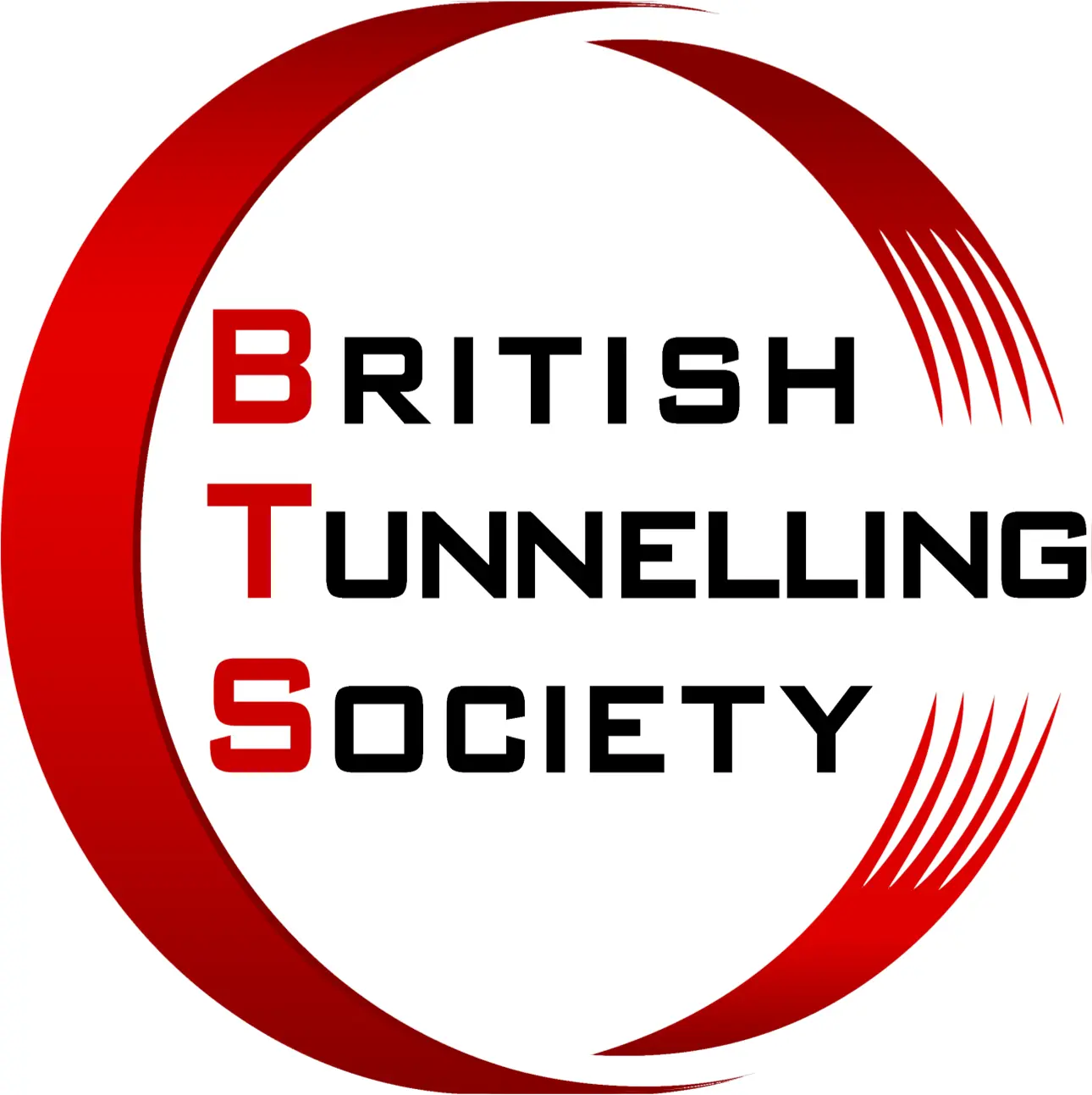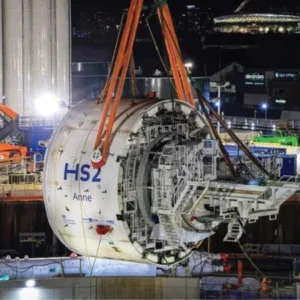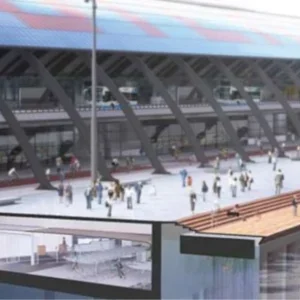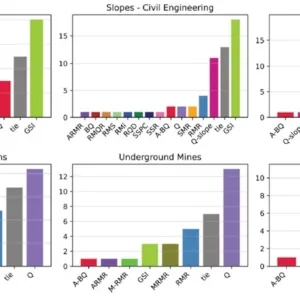The 774m Vlake Tunnel is located in the Netherlands on the A58 highway, below the channel through ‘Zuid-Beveland.’ It comprises two tubes, each with two lanes and one emergency lane, and a 1m wide work zone between the tubes. Originally built between 1972 and 1976, the tunnel saw its last renovation in 1992—prior to upgrades completed early this summer including installation of LED (light-emitting diode) linear lighting inside and LEDs for the traffic control lighting outside.
On the whole, this most recent work needed to renovate an outdated system, preparing the tunnel to meet future Dutch and wider regulations and replacing the remote control from its location in Wemeldinge to Geldrop. Initially, an LED solution wasn’t intended for the lighting, but it was something Willem Zandvliet had been thinking about. Working for Rijkswaterstaat, the organisation that manages and develops the main national infrastructure facilities on behalf of the government, he is involved with its ZekerDuurzaam (or using less energy) programme.
It started as an idea to save energy by bringing light in the tunnel where it is needed, explains Zandvliet, not to lose light in reflectors or the protective glass, bringing the LED light directly where it’s needed with small lenses. “This is only possible because LED light is a very small light point so you can also use small lenses,” he says.
To test the concept of using LEDs, a feasibility study was started in April 2008 through LedExpert and Nico de Kruijter, a light consultant. “The final conclusion of the feasibility study made clear that LED tunnel lighting was possible but at the moment there were no lamp suppliers,” he says. Meanwhile, the project’s contractor, Siemens, made a successful offer in September 2008 that included conventional lighting in combination with a daylight grid.
The ZekerDuurzaam approached Indal, which it has worked with previously, to be the supplier and offered the Vlake Tunnel as a pilot project. It was the best opportunity to test the concept because Siemens was already doing the renovation work, says Zandvliet, though, changing the contract with Siemens was a big risk to take. The decision in September 2009 to use LED linear lighting also left Indal with a tight deadline to develop the product, test it, produce it and deliver it for January 2010.
Installation took six to seven weeks, with four weeks spent working on the first tube and only two and a half on the second after Siemens found the most efficient way of working. The tunnel opened to traffic in mid June, with a reduced speed limit of 90km, which will change once the users in the area are used to it.
Indal estimates the Vlake Tunnel will see a 30 per cent reduction in energy use, but notes that when it comes to comparisons, the original and new schemes are not identical. The previous scheme didn’t have enough of a transition (going toward the exit), and the new scheme has corrected this adaptation zone.
T-line
The LED linear lighting in the Vlake Tunnel comprises one line of basic lighting that runs the whole length and six lines of entrance lighting, which reduce gradually as the lines reach the exit of the tunnel. Each T-line segment is powered by a driver, of which eight are stored in a driver box, and boxes are connected as driver units. Indal’s T-Line is available in two versions, a 40 LED for interiors and a 56 LED for entrance lighting—used for the basic line and the six entrance lines of the Vlake Tunnel respectively.
For road tunnel applications, there are traditional HPS (high-pressure sodium) point source lighting or fluorescent linear lighting, explained Indal’s product manager for tunnel lighting Jeroen van der Vlugt. So the T-line has been designed to combine the comfort and safety of the fluorescent option with the lower total cost of ownership of HPS point source.
Lighting from linear fluorescent applications is more uniformly shed on the walls and road and is a cooler, white colour. This is more comfortable for drivers because there are no dashboard ‘flashes’, no sharp moving shadows and no flickering effect, compared to the more yellow colouring and shadows created by HPS point source lights that are spaced apart, van der Vlugt explained. On the other hand, HPS is a cheaper option when it comes to the cost of the luminaires and their installation, the cost of energy and the costs associated with lamp replacement.
What Indal has taken is the linear lighting concept—installing T-line one after another without any space between for continuous illumination—and using LEDs for their white light, lower energy consumption and longer lifetime. Because maintenance of the T-line doesn’t require lamp replacement, only high-pressure cleaning, the total cost of ownership for an application is quite close to that of the HPS option.
Future standards
In the UK, the first trial of T-line lighting will be installed in the Upper Thames Street Tunnel in London later this year. “But unlike the Vlake Tunnel, the original SON Cornice lighting will be temporarily left in situ and switchable,” says Steve Ryan, tunnels technical manager with Transport for London (TfL). “This will allow TfL to gather comparison data on lighting performance, tunnel user perception with regards to colour, intensity and safety along with energy consumption.”
Data gathered from this project will also be good for developing standards for LED lighting in tunnels, he explained.
Project requirements for the Vlake Tunnel had originally been based on conventional lighting, and requirements for LED highway lighting are not yet available. Indal developed the LED tunnel light installation according to the advice of the European CIE-tunnel lighting standard guidelines. The Vlake Tunnel would, according to new requirements, not have a daylight grid, have continuously adjustable lighting from 10 to 100 per cent and meet the requirements of the Dutch Foundation of Illumination (NSVV).
Because the Vlake Tunnel’s lighting can be dimmable down to 10-15 per cent, it can match the various ambient conditions during the day and night. The tunnel can even be lit using just the basic interior lighting alone—and not the six lines of entrance LEDs. uture developments in LEDs will increase their efficiency, explained Indal. For example, the illumination now provided in the Vlake Tunnel by six rows could be provided by only three. From a system perspective, Indal expects developments allowing lighting on demand, only when necessary and the exact amount. And in the future, integrated tunnel design where elements like the tunnel portal design, road surface and wall materials and the design speed and tunnel class will factor in the use of LEDs.
Installation of LED linear lighting completed in the Vlake Tunnel, the Netherlands, in June. There are 56 LEDs in each panel of entrance lighting The lines of entrance lighting reduce toward the tunnel’s exit Layout of the LED linear lighting and drivers in the Vlake Tunnel






